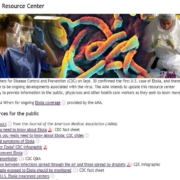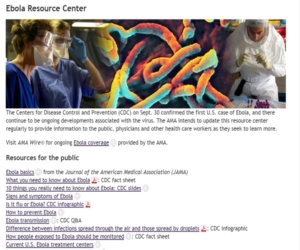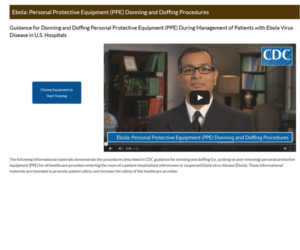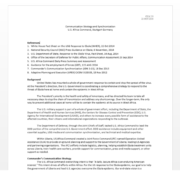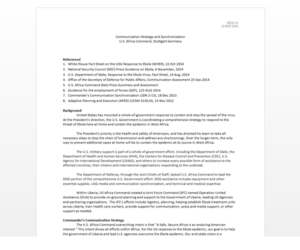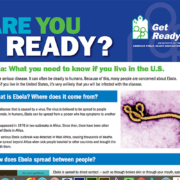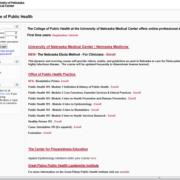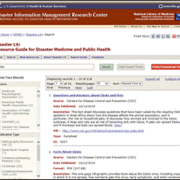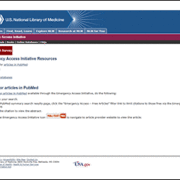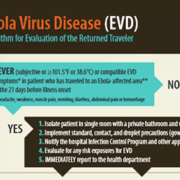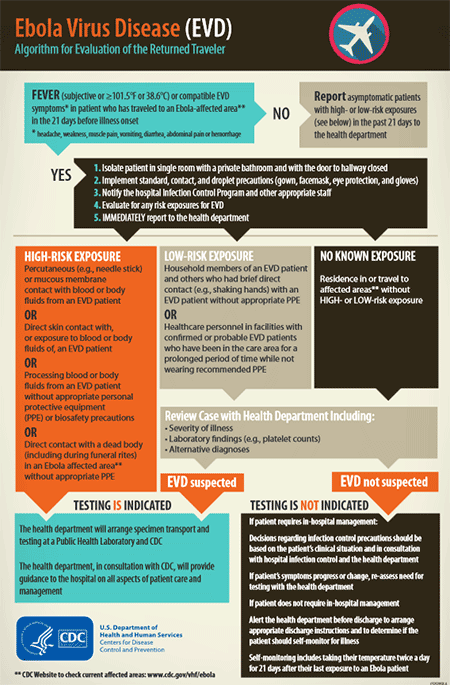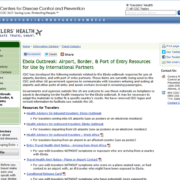Personal Protective Equipment (PPE) Donning and Doffing Procedures
/in Video CDC United States English Infection Control Community Health Workers /by Marla Shaivitz | Health Communication Capacity Collaborative Personal Protective Equipment (PPE) is intended to prevent contact with the infectious agent, or body fluid that may contain the infectious agent, by creating a barrier between the worker and the infectious material. Gloves protect the hands, gowns or coveralls protect the skin and/or clothing, masks and respirators protect the mouth and nose, and face shields protect the entire face.
Personal Protective Equipment (PPE) is intended to prevent contact with the infectious agent, or body fluid that may contain the infectious agent, by creating a barrier between the worker and the infectious material. Gloves protect the hands, gowns or coveralls protect the skin and/or clothing, masks and respirators protect the mouth and nose, and face shields protect the entire face.
Personal Protective Equipment (PPE) Donning and Doffing Procedures
Resource Type(s)
Topic(s)
Audience(s)
Language(s)
Country(ies)
Source(s)
Ebola: Personal Protective Equipment (PPE) Donning and Doffing Procedures
/in Video CDC United States English Infection Control Health Care Workers /by Marla Shaivitz | Health Communication Capacity CollaborativeResource Type(s)
Topic(s)
Audience(s)
Language(s)
Country(ies)
Source(s)
Communication Strategy and Synchronization
/in Strategies and Plans U.S. Government United States English Crisis Communication People Developing Messages and Materials /by Callie CarmichaelResource Type(s)
Topic(s)
Audience(s)
Language(s)
Country(ies)
Source(s)
APHA – Get Ready Campaign for Ebola
/in Fact Sheet American Public Health Association United States English Preparedness General Public /by Kim Martin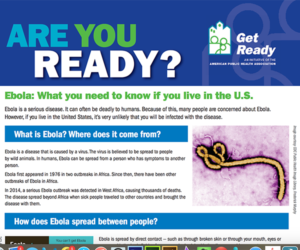 APHA’s Get Ready campaign helps Americans prepare themselves, their families and their communities for all disasters and hazards, including pandemic flu, infectious disease, natural disasters and other emergencies. This fact sheet address Ebola.
APHA’s Get Ready campaign helps Americans prepare themselves, their families and their communities for all disasters and hazards, including pandemic flu, infectious disease, natural disasters and other emergencies. This fact sheet address Ebola.
Resource Type(s)
Topic(s)
Audience(s)
Language(s)
Country(ies)
Source(s)
The Nebraska Ebola Method – For Clinicians
/in Website University of Nebraska United States English Treatment Community Health Workers /by Marla Shaivitz | Health Communication Capacity Collaborative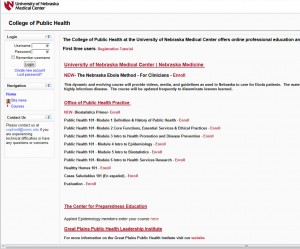 This course from the University of Nebraska provides videos, media, and guidelines as used in Nebraska to care for Ebola patients. The materials share current processes being used to safely care for patients with this dangerous, highly infectious disease.
This course from the University of Nebraska provides videos, media, and guidelines as used in Nebraska to care for Ebola patients. The materials share current processes being used to safely care for patients with this dangerous, highly infectious disease.
The course will be updated frequently to disseminate lessons learned.
Resource Type(s)
Topic(s)
Audience(s)
Language(s)
Country(ies)
Source(s)
Ebola: Resource Guide for Disaster Medicine and Public Health
/in Website National Library of Medicine Global, United States English Crisis Communication, General, Health Promotion, Infection Control, Preparedness, Prevention, Signs and Symptoms, Transmission, Treatment, Waste Disposal Aid Workers, Community Health Workers, General Public, Government, Health Care Workers, Infection Prevention & Control, Laboratory Workers, Leaders /by Katie Kuehn Literature from the U.S. Department of Health & Human Services about Ebola.
Literature from the U.S. Department of Health & Human Services about Ebola.
Resource Type(s)
Language(s)
Country(ies)
Source(s)
NIH Emergency Access Initiative Resources
/in Website National Library of Medicine Global, United States English Preparedness Aid Workers, Government, Health Care Workers, Leaders, Students /by Katie Kuehn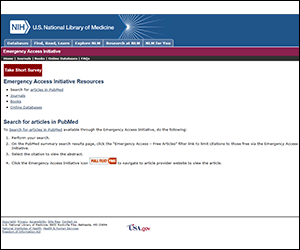 Access to the U.S. National Library of Medicine for Ebola resources.
Access to the U.S. National Library of Medicine for Ebola resources.
Resource Type(s)
Topic(s)
Language(s)
Country(ies)
Source(s)
CDC – Ebola Virus Disease (EVD) Algorithm for Evaluation of the Returned Traveler
/in Infographic CDC United States English Travel /by Marla Shaivitz | Health Communication Capacity CollaborativeEbola Outbreak: Airport, Border, & Port of Entry Resources for Use by International Partners
/in Website CDC United States English Travel /by Marla Shaivitz | Health Communication Capacity Collaborative
The Ebola Communication Network was originally developed by the Health Communication Capacity Collaborative (Cooperative Agreement #AID-OAA-A-12-00058) and expanded under Breakthrough ACTION (Cooperative Agreement #AID-OAA-A-17-00017) both under the leadership of Johns Hopkins Center for Communication Programs. This website is now maintained by Johns Hopkins Center for Communication Programs and its contents are the sole responsibility of CCP. The contents of this website do not necessarily reflect the views of USAID, the United States Government, or Johns Hopkins University.

